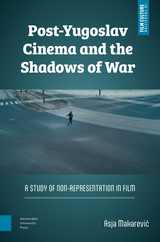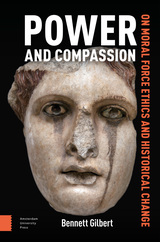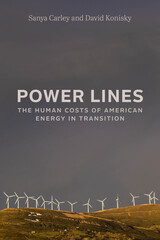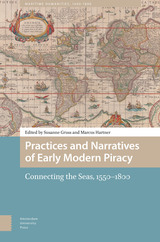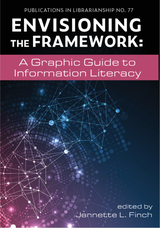
Envisioning the Framework offers a visual opportunity for thought, discovery, and sense-making of the Framework and its concepts. Seventeen chapters packed with full-color illustrations and tables explore topics including:
- LibGuides creation through conceptual integration with the Framework
- fostering interdisciplinary transference
- the convergence of metaliteracy with the Framework
- teaching multimodalities and data visualization
- mapping a culturally responsive information literacy journal for international students
Twenty-first-century information literacy involves the metaliterate learner, reflects seismic changes in the duties and roles of teaching librarians, requires new partnerships with faculty and instructional designers, and emphasizes continuous assessment practices. Envisioning the Framework can help you use symbols and visuals for deeper understanding of the Framework, to map the Framework with teaching and learning objectives, and to tell a coherent story to students featuring the frames and the Framework.

Dr. Ehrhardt considers that New Testament teaching could benefit by being more closely related to its context and background than is often the case. He suggests that the method of the presentation of the Gospel is important, as well as the intention behind it.
In an examination of the background, Dr. Ehrhardt deals principally with two aspects. The first is the fact that the New Testament and the form Christianity took in the first few centuries after the death of Christ were subject to several influences. One of the most important was Greek and Dr. Ehrhardt traces Hellenistic influence in St. Paul's treatment of Christ, in Greek modes of thought in the preaching of the Gospel and the historical tradition in the Book of Acts. He then turns to Jewish and Roman practices and ideas which played a part in forming Church doctrine and ritual, such as ordination and baptism. Secondly, he discusses the daily life of the newly-converted Christians, the problems they met with and the changes that took place.
It is hoped that these essays, many of which aim at giving a fresh, rather than a final view, may prove stimulating by asking unfamiliar questions and offering new solutions.
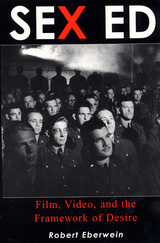
Eberwein starts his investigation in the silent and early sound eras with educational films used both to warn audiences about venereal disease and to provide basic contraception information. World War II movies, he states, waged their own war against venereal disease-in the armed services and at home. Newer works deal with birth control and focus in particular on AIDS.
Sex Ed also highlights the classroom. Eberwein draws connections between the earliest and most recent examples of educational films as he analyzes their ideological complexity. He concludes by examining marriage-manual films of the early 1970s and very recent videos for couples and individuals seeking instruction in sexual techniques to increase pleasure.
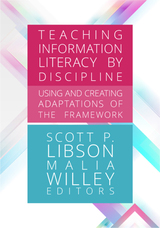
In nine thorough sections, Teaching Information Literacy by Discipline shows the great diversity in how librarians understand, adapt, and apply the Framework. It explores how frames are applied when drafting learning outcomes, building research guides, crafting assignments, designing curricula for a particular discipline, and more.
- Arts
- Writing
- Humanities
- Interdisciplinary Studies
- Social Sciences
- Business
- Education and Behavioral Studies
- Health
- Sciences
READERS
Browse our collection.
PUBLISHERS
See BiblioVault's publisher services.
STUDENT SERVICES
Files for college accessibility offices.
UChicago Accessibility Resources
home | accessibility | search | about | contact us
BiblioVault ® 2001 - 2025
The University of Chicago Press


